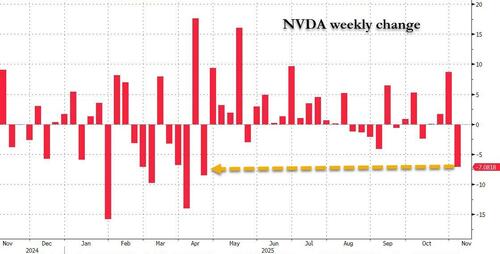2022 was a turbulent year for our national legislature. There were constructive developments as well as troubling trends in our legislative functioning. Both aspects require careful consideration as they impact the effectiveness of our Parliament and the strength of our democracy. Let’s start with the promising news, one from the government and the other from Parliament.
Under our Constitution, the legislature and the executive both have the power to make laws. The government can legislate when there is an emergent situation and Parliament is not in session. These laws are called ordinances and come into force after the President signs off on them. For example, the government brought the three contentious farm laws as ordinances in 2020.
Over the years, governments have used and sometimes abused this constitutional mechanism to push through routine laws. In the last 20 years, on average, governments promulgated eight ordinances yearly. The regular use of the ordinance route undermines the legislature’s role as a lawmaking institution, and Members of Parliament (MPs) have criticised the government for using it. But in 2022, the government did not promulgate a single ordinance, a feat that was last achieved half a century ago, in 1963.
The second development is about the scrutiny of government legislation. A robust lawmaking process requires that parliamentary committees scrutinise bills that ministries bring before Parliament. However, the government is often resistant to such scrutiny. Instead, it requests the Lok Sabha and Rajya Sabha presiding officers to exercise their discretion and not refer their bills for a detailed examination to Parliament’s departmentally related standing committees.
In a possible first for our Parliament, its Committee on Information Technology, headed by Lok Sabha member Pratap Jadhav, started discussing the draft Indian Telecommunication Bill. The government is yet to introduce the legislation in Parliament. The ministry has published a draft of the telecom bill and a revamped personal data protection bill and invited public comments on both. Union telecom minister Ashwini Vaishnaw welcomed the parliamentary committee’s examination of the bill as a “reflection of collaborative spirit in Parliament”.
These two examples are steps in the right direction and need our recognition. But all is not well with our parliamentary functioning, and the government and Parliament need to do more. Let’s start with the government. One aspect of our national legislature is its sole responsibility — the calendar of parliamentary sittings. Lok Sabha met for 56 days in 2022. It was marginally better in 2021 at 59 days, and in the pandemic-hit 2020, it was 33. In 2019, when the current Lok Sabha started, it met for 57 days, totalling 205 days. Let’s put this last number in perspective. Lok Sabha has a five-year term, and we have had 16 of them since Independence. Nine completed five years, and six did not. During the Emergency, the government extended the term of the House by a year. The nine full-term Lok Sabha’s averaged meeting for 469 days during their tenure.
With governments convening Parliament for fewer days, Lok Sabha sittings have dropped dramatically. The 14th Lok Sabha (2004-09) worked for 332 days, the 15th (2009-14) for 357, and the 16th (2014-19) for 331 days. The current 17th Lok Sabha is far behind its predecessors in the days it has been in session. Even accounting for lost days due to the pandemic, this Lok Sabha has much catching up to do, or else it will go down in the record books as one with among the lowest number of sitting days.
Talking of record books, the current Lok Sabha has not filled the constitutionally mandated position of deputy speaker. Elections for this post have not taken place for three-and-a-half years, even though the Constitution requires that it takes place as soon as possible. Since Independence, the longest this position has remained vacant is for 269 days during the one-year tenure of the 12th Lok Sabha (1998-99).
2022 also highlighted worrying trends in the Lok Sabha and Rajya Sabha’s functioning. The recent winter session of Parliament was cut short by a week. It was the eighth successive time that a session was adjourned ahead of schedule. The pandemic curtailed some sessions, but others, such as the winter session, were cut short after political parties unanimously agreed to do so. They also blamed each other for the dysfunction of Parliament. The ruling coalition accused the Opposition of disrupting House proceedings, and the Opposition said the government was shying away from a debate on contentious national issues.
MPs have, by and large, also been behind in their lawmaking roles. Their attendance in parliamentary committees has been low. In some cases, parliamentary staff scrambled to find MPs to meet the minimum numbers for a meeting. Parliamentary scrutiny of legislation has also been wanting. Few laws go through detailed scrutiny in committees. Some bills are examined by a general committee, bypassing the parliamentary committee that specialises in the work of the ministry piloting the bill.
2023 offers the political class and Parliament opportunities to strengthen our legislative functioning. Parliament will move from its 90-plus-year-old building to a new one. As part of that transition, it should reimagine its rules to make the institution more deliberative and one that scrutinises laws and not simply discusses them. In addition, the government should prioritise Parliament and plan its calendar and legislative agenda. This planning will be critical, with 200 G20 events and nine state elections scheduled in 2023. These executive and legislature changes will set the ball rolling for strengthening our parliamentary system and showcasing to the world that India is the mother of democracy.
Chakshu Roy is the head of legislative and civic engagement, PRS Legislative Research
The views expressed are personal






![Every Stock That Pays Dividends In January [Free Excel Download] Every Stock That Pays Dividends In January [Free Excel Download]](https://www.suredividend.com/wp-content/uploads/2022/11/January-Dividend-Stocks-e1667689435743.png)








